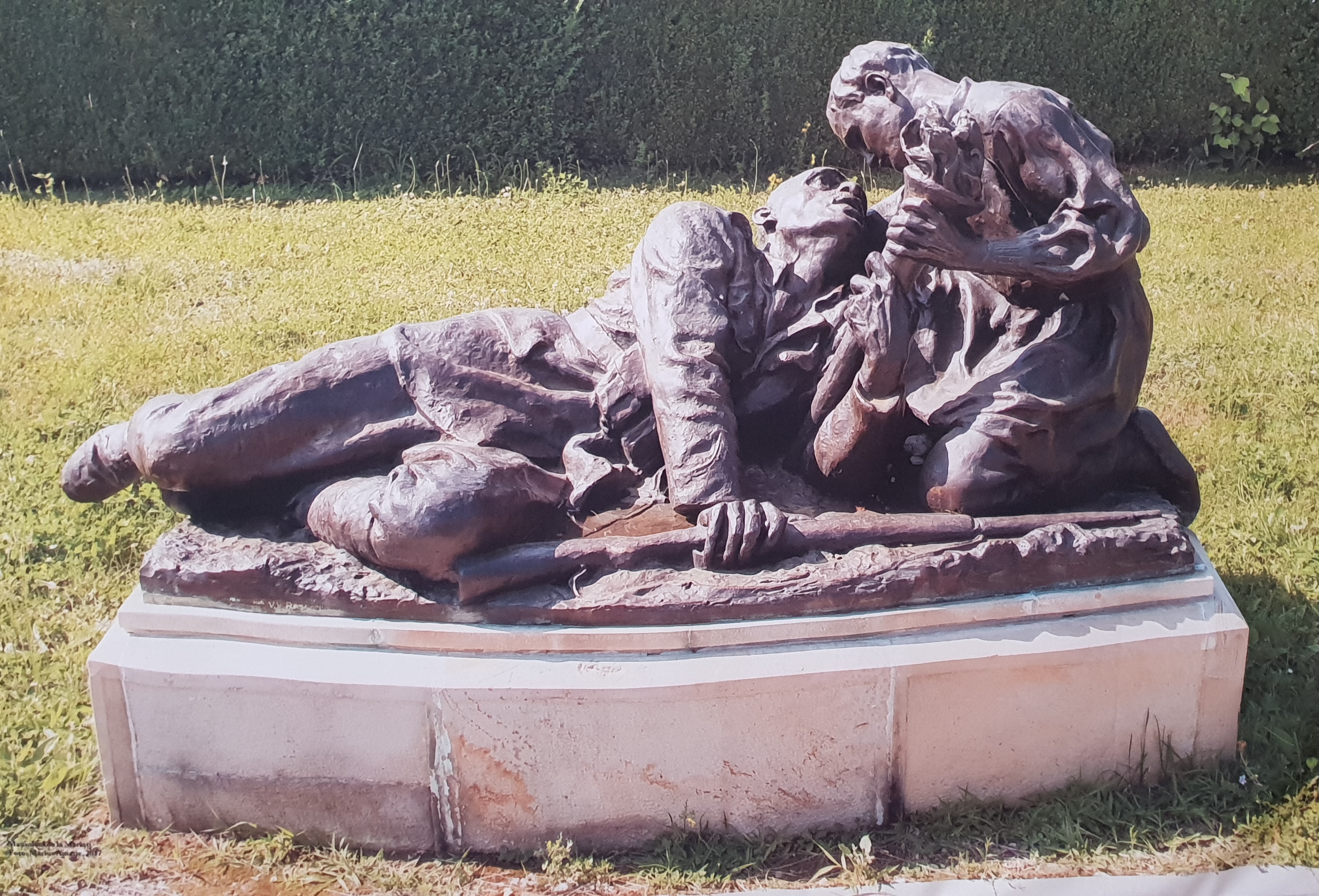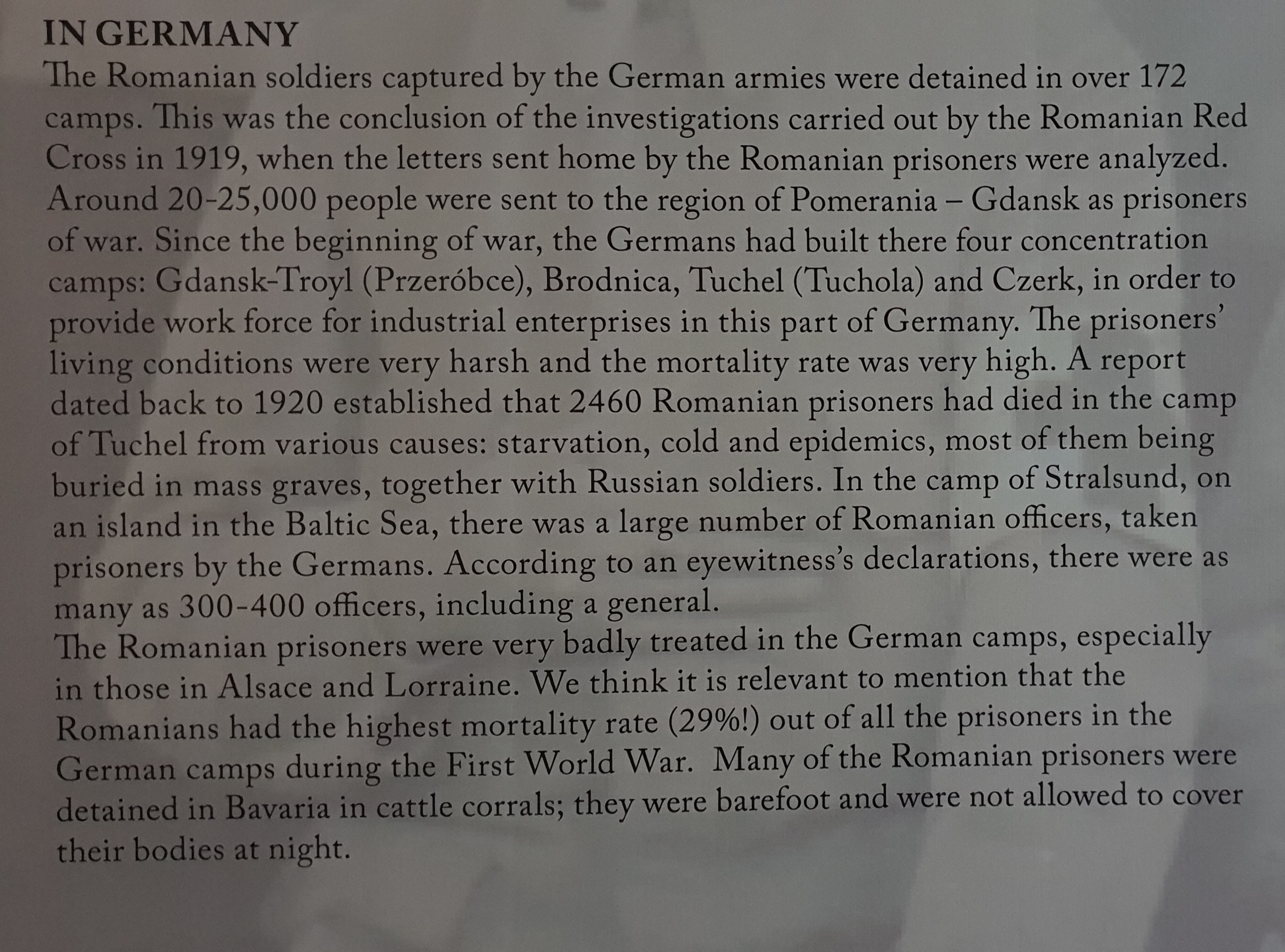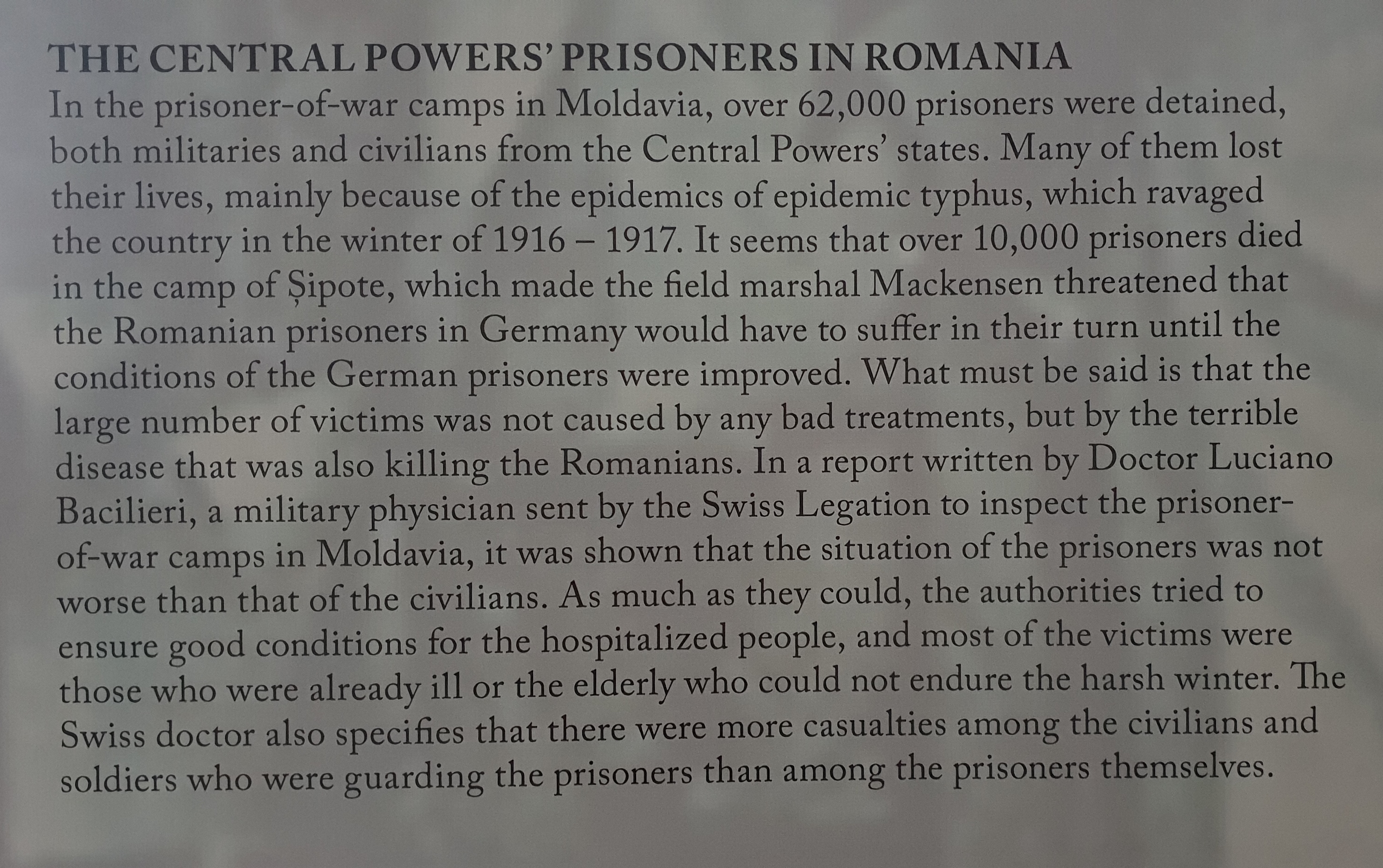
A very professional docent informed me as to where the Roman artifacts and the treasury were, downstairs, and the WW I exhibit was, on the first floor. I told him I wanted to see the WW II exhibit. He said no, WW I. I understand, I said, but I’d like to see the exhibits on WW II and 1989. He said oh, that’s upstairs. That’s not open. Ok, I said, when will it be open? He shrugged, that’s not certain. Umm, maybe in August? I asked. He looked amused. The upstairs has been closed for 15 years. My eyes widened. He assured me he wasn’t joking. I asked him why this was, figuring I had an idea as to the answer. „Indolence,“ he said, which was not what I expected, but was as good an answer as any.

 The Romanian WW I exhibit reminded me of the British War Museum in its graphic depiction of suffering. Whereas Serbia lost a huge number of men, the military museum in Belgrade very much celebrated being on the winning side. Romania, also on the winning side, isn’t celebrating anything. Romania makes it clear the country suffered. Something I found interesting was the amount of attention given to prisoners, both German prisoners and Romanian. I also found the material on Moldova quite interesting.
The Romanian WW I exhibit reminded me of the British War Museum in its graphic depiction of suffering. Whereas Serbia lost a huge number of men, the military museum in Belgrade very much celebrated being on the winning side. Romania, also on the winning side, isn’t celebrating anything. Romania makes it clear the country suffered. Something I found interesting was the amount of attention given to prisoners, both German prisoners and Romanian. I also found the material on Moldova quite interesting.
 My experience was that US histories glossed over the positions the Bulgarian and Romanian aristocracies were in when negotiating with Hitler, and how their choices were influenced by what had happened during WW I, well within everyone’s memories.
My experience was that US histories glossed over the positions the Bulgarian and Romanian aristocracies were in when negotiating with Hitler, and how their choices were influenced by what had happened during WW I, well within everyone’s memories.
 It could be argued that what the west thinks of as „The Holocaust“ began with Romania in Transnistria, and in this regard I found the texts on prisoner of war camps in Moldavia interesting.
It could be argued that what the west thinks of as „The Holocaust“ began with Romania in Transnistria, and in this regard I found the texts on prisoner of war camps in Moldavia interesting.
 So look, this has nothing to do with Romania, but it’s my blog, and I’ll write what I like. This is cookie cutter coverage of the Lusitania. Those nefarious Germans argued the pasenger ship was carrying a supply of munitions! They argued that because it was, which was no great secret in New York. German intelligence reported the fact back, and there was leafletting of prospective passengers pointing out the ship was carrying munitions and so would be a target. As a passenger you might or might not believe the leaflets, but it’s not like the ship carrying war matériel was something no one mentioned at the time.
So look, this has nothing to do with Romania, but it’s my blog, and I’ll write what I like. This is cookie cutter coverage of the Lusitania. Those nefarious Germans argued the pasenger ship was carrying a supply of munitions! They argued that because it was, which was no great secret in New York. German intelligence reported the fact back, and there was leafletting of prospective passengers pointing out the ship was carrying munitions and so would be a target. As a passenger you might or might not believe the leaflets, but it’s not like the ship carrying war matériel was something no one mentioned at the time.